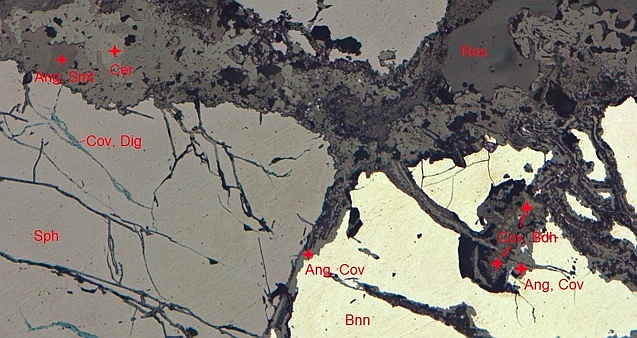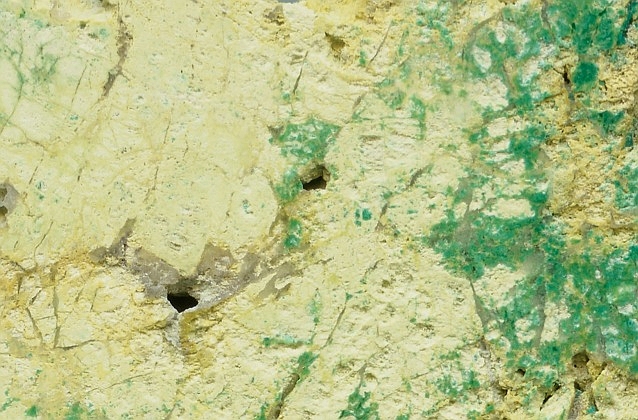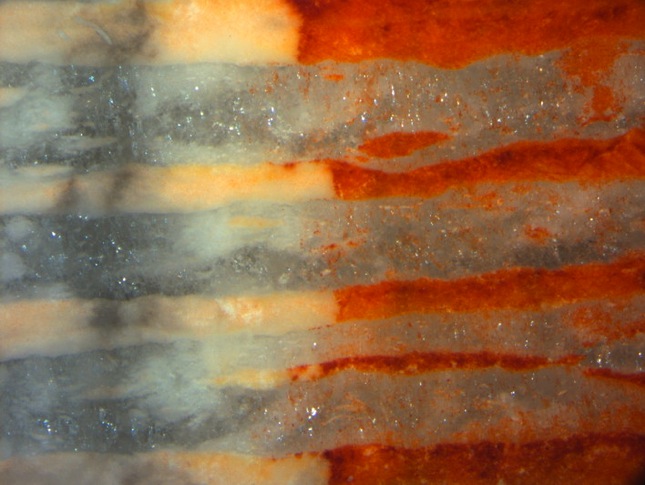Zorzone is part of the Gorno-Oneta zinc mining district where mining dates back at least 150 years and ended in 1985. Currently the Australian company Energia Minerals Ltd holds the exploration license for the Zorzone mine area. The main ore minerals are sphalerite, galena, and in minor but recognizable amounts of bournonite. The ore body has several oxidation zones consisting entirely of secondary zinc and lead minerals. The ore mineralization is bound to a layer of triassic limestone called "Calcare Metallifero Bergamasco". Since a lot of mineral fotos from Zorzone can be found in the web, I like to focus on some more rare aspects.
Here are some results from an ongoing study of the alteration of bournonite. Bournonite is the main source of antimony and copper in this mine and therefore the predecessor for a variety of secondary minerals. Rich yellow green masses are the final state of the alteration. The sample presented here shows the very beginning of the degradation process. In the acidic environment provided by pyrite and sphalerite oxidation the bournonite is first altered to anglesite, covellite and bindheimite, plus some free Cu ions which then attack the sphalerite and get zinc into solution. The zinc then forms smithsonite, while anglesite finally is converted to cerussite. The bindheimite stays as is and forms the large yellow masses mixed with cerussite.
Polished section from Ponente level under polarized light. Stars mark the sampling positions from the microraman analysis. Sph: sphalerite; Bnn: bournonite; Cov: covellite; Dig: digenite; Ang: anglesite; Cer: cerussite; Bdh: bindheimite; Smt: smithsonite; Res: embedding resin (epoxy). References were taken from the University of Vienna raman database. Size: the small analyzed seam between Sph and Bnn is about 12 µm wide.

The final state: the yellow mass consists of a mixture of bindheimite and cerussite. Field of view: about 10 mm.

Here is an other interesting specimen from this mine. It is a finely banded secondary mineralization, width of the sample is 17 cm:

Polished section, width 20 mm:

Micro-raman spectrum of the opaque region. The spectrum represents a mixture of smithsonite (opaque white) and gypsum (translucent). Black: this sample, green: Rruff R040051 (smithsonite), blue: Rruff R060509 (gypsum).

Parts of the sample were treated with Zinc Zap and washed with water after 10 min. The secondary zinc became very clearly visible, even those in the gypsum layers which could not be seen under the microscope before. Scale is the same as in the microfoto above.

Foto of the border of the stained region:

Zinc Zap: see Simple chemical tests


